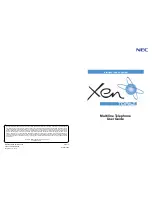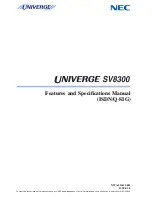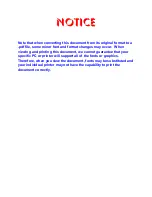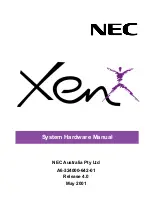
PAGE
23
PAGE
22
FACTORY
SERVICE
CENTERS
FCC REQUIREMENTS
USER INSTRUCTIONS
1. This equipment complies with Part 68 of the FCC rules. On the bottom of this equipment is a label that
contains, among other information, the FCC registration number and Ringer Equivalence Number (REN)
for this equipment. If requested, provide this information to your telephone company.
2. The REN is useful to determine the quantity of devices you may connect to your telephone line and still
have all of those devices ring when your number is called. In most, but not all areas, the sum of the RENs
of all devices should not exceed five (5.0). To be certain of the number of devices you may connect to your
line, as determined by the REN, you should call your local telephone company to determine the maximum
REN for your calling area.
3. If your telephone causes harm to the telephone network, the telephone company may discontinue your
service temporarily. If possible, they will notify you in advance. But if advance notice is not practical, you
will be notified as soon as possible. You will be advised of your right to file a complaint with the FCC.
4. Your telephone company may make changes in its facilities, equipment, operations, or procedures that
could affect the proper operation of your equipment. If they do, you will be given advance notice so as to
give you an opportunity to maintain uninterrupted service.
5. If there is a problem with this unit, the telephone company may ask you to disconnect this equipment from
the network until the problem has been corrected or you are sure that the equipment is not malfunctioning.
6. Repairs can only be made by the manufacturer or an authorized service agency. Unauthorized repairs void
registration and warranty. Contact seller or manufacturer for details of permissible user-performed routine
repairs, and where and how to have other than routine repairs made.
7. This equipment may not be used on coin service provided by the telephone company. Connection to party
lines is subject to state tariffs. (Contact your state public utility commission or corporation commission for
information.)
Jacks: RJ11 Ringer Equivalence: See bottom/underside of the unit.
NOTE: This equipment has been tested and found to comply with the limits for a Class B digital device,
pursuant to Part 15 of the FCC Rules. These limits are designed to provide reasonable protection against
harmful interference in a residential installation. This equipment generates, uses, and can radiate radio
frequency energy and, if not installed and used in accordance with the instructions, may cause harmful
interference to radio communications. However, there is no guarantee that interference will not occur in a
particular installation. If this equipment does cause harmful interference to radio or television reception,
which can be determined by turning the equipment off and on, the user is encouraged to try to correct the
interference by one or more of the following measures:
●
Reorient or relocate the receiving antenna.
●
Increase the separation between the equipment and receiver.
●
Connect the equipment into an outlet on a circuit different from that to which the receiver is
connected.
●
Consult the dealer or an experienced radio/TV technician for help.
Any changes made by the user not approved by the manufacturer can void the user’s authority to operate the
equipment. This product is hearing aid compatible.
TROUBLESHOOTING
“
NoSvc
NoSvc
NoSvc
NoSvc
NoSvc
” displays on the LCD
■
Make sure that the base unit is plugged in
to the AC outlet.
■
Make sure that the telephone cord is
properly connected to the wall jack.
■
The security code may not be properly
registered to the base unit (See
“Registering the Handset to the Base” -
page 4).
■
The individual handset may not be
programmed with the correct security
code (See “Programming the System
Security Code” - page 4).
Handsets keep going “off hook” by
themselves (won’t hang up)
■
Make sure that each handset has a
DIFFERENT handset I.D.
One or more handsets don’t communicate
with the base or the other handsets
■
Make sure that each handset has the
SAME security code.
Poor Sound Quality
■
The handset might be too far away from
the base.
■
Make sure the battery is fully charged.
■
Do not use the phone near a microwave
oven that is in use.
■
Another phone might be causing
interference.
“Out of Range” displays on the LCD
■
The handset is too far away from the base
unit. Move closer to the base unit.
No Caller ID data is displayed
■
Confirm with your local telephone
company that you are subscribed to Caller
ID service.
No Call Waiting Caller ID
■
Confirm with your local telephone
company that you are subscribed to Call
Waiting Caller ID. Even if you have
subscribed to Call Waiting and Caller ID
services separately, you may need to
initiate the combined Call Waiting Caller ID
service.
“
Private
Private
Private
Private
Private
”, “
Unavailable
Unavailable
Unavailable
Unavailable
Unavailable
”, or “
No
No
No
No
No
Name
Name
Name
Name
Name
” Messages
■
All or part of the Caller ID information is
not being sent. The information is either
unavailable or is being blocked by the
caller.
During a Call Waiting Call, the speaker
mutes temporarily
■
This is normal operation. The speaker
must be muted briefly to allow the phone
to receive Call Waiting Caller ID
information.
A second handset can’t join the
conversation
■
Only one handset at a time can talk with
an outside caller. To allow a different
handset to talk to the caller, transfer the
call to the other handset.
Voice Message Indication does not work
■
Contact your local telephone company to
make sure that your telephone line
receives FSK message signaling.
Содержание 1660
Страница 15: ...PAGE 28 HANDSET FEATURES ...

































